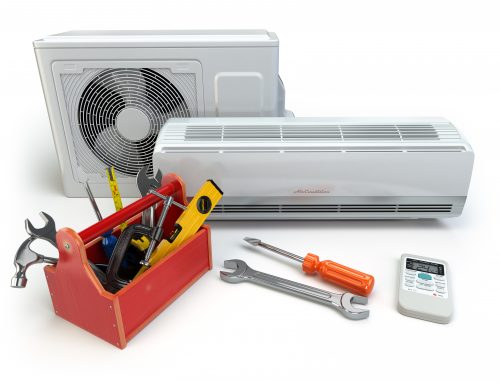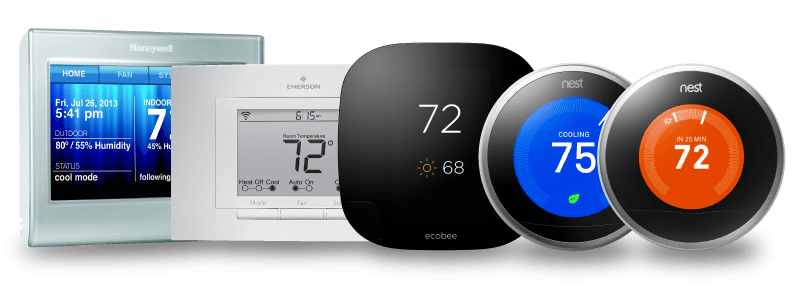Earlier in the year, we published an article “4 ways to find out which of your appliances use the most energy“. Here’s the answer: in Australia, air conditioning accounts for 40% of energy expenses. This means, for most of us, there is a significant potential to save energy by upgrading our systems.
Air conditioning equipment plays a very important role in ensuring indoor comfort during the summer, but the operating costs can be significant, especially if the unit is old. There are now highly efficient AC units that offer savings of over 60 percent when replacing window-type air conditioners or first-generation split systems. This article will provide four tips to achieve maximum energy savings when you purchase a new air conditioner.
1) Look for a high energy efficiency rating (star rating)
Air conditioners normally include the E3 Energy Rating as part of their nameplate information, and a good way to explain the concept is by comparison to the fuel economy of a car.
- Air conditioners in Australia come with an Energy Rating label, which displays the cooling output and electric power input. The label also displays a certain number of stars that indicates energy efficiency, with the maximum score being 10 stars.
- Just like a car that gets more kilometres per litre costs less to run, an air conditioner with more stars reduces your electricity bills.
The E3 Energy Rating label is useful because it allows direct comparison between products from different manufacturers. If you must choose among two air conditioners of the same cooling output, the unit with more stars in its label will be the less expensive to operate.
2) Ensure your air conditioning unit is the right size
Air conditioning units offer their best performance when the cooling load matches their rated output. Whenever an AC unit is specified too small or too large, several issues arise.
Oversized air conditioners
There is a common misconception about oversized AC units: believing that the extra capacity will translate into energy savings by reducing the time the compressor stays on. The reality is that the total cooling output is comparable to that of a properly sized unit, with the difference that a larger compressor requires less time to cool indoor spaces, but consumes about the same amount of energy.
It is also important to remember that AC units provide dehumidification in addition to space cooling. An oversized air conditioner can’t dehumidify indoor spaces effectively because it operates in short bursts, which results in a cold and humid environment. This has two negative consequences: it causes discomfort and may lead to health issues.
Oversized AC units are also more expensive to own: in addition to having a higher upfront cost, their service life may be reduced due to how frequently the compressor cycles on and off.
Undersized air conditioners
Just like an oversized unit operates in short bursts, an undersized AC unit’s compressor may operate for long periods or even indefinitely, never reaching the desired indoor temperature and increasing energy expenses. The unit can provide comfort when the cooling load is moderate, but may be taken to its limit during the hottest weeks of summer without being able to reach the desired temperature. Excessive compressor runtime is also detrimental for service life.
Sizing an AC unit properly
The best way to ensure an AC unit has the right capacity according to the application is hiring a professional to provide an evaluation. Undersized and oversized units are often the result of selecting equipment based on “rules of thumb”.
When upgrading an AC unit, purchasing the right capacity is critical, or otherwise the performance issues may negate a significant portion of the potential energy savings.
3) If you use resistance heating, consider purchasing a heat pump
A heat pump is basically a reversible air conditioner, capable of providing heating during the winter and cooling during the summer without relying on two separate pieces of equipment. Depending on the current heating system you use, a heat pump may be a good investment or not.
- If your use a resistance heater, which also runs on electricity, an air-source heat pump can offer savings of over 60 percent.
- If you use a gas heater, a heat pump will increase your power bills because you would be changing the energy source. In most cases, gas tends to be a more cost-effective heat source than electricity, but we recommend you get a professional analysis just to be sure; the most efficient heat pump models can be competitive even against gas heating.
The ideal scenario for upgrading to a heat pump would be a household that uses old AC units during the summer, and resistance heating during the winter. In this case, two pieces of equipment are being consolidated into a single unit, and one that offers energy savings all year long.
4) Improve insulation and air-tightness at your home
The complement to making your AC equipment more efficient is reducing the cooling load of your property, and this can be achieved by improving your building envelope. Before carrying out any heating or cooling upgrade, you can get your home checked for insulation issues and air leaks – both can increase HVAC expenses. Addressing these factors will enhance the energy savings achieved once you purchase your new air conditioner or heat pump.
Conclusion
By following the tips above, you can get the maximum return on investment when upgrading your air conditioning units. If the unit is properly sized and has a high energy efficiency rating, while you ensure your home is properly insulated and air-tight, you can achieve significant energy savings.
LED lighting can be an excellent complement for air conditioning upgrades: these fixtures release less heat indoors, which reduces the cooling load on AC equipment. The effect can be significant in commercial spaces during the summer, where lighting and AC systems are used simultaneously during working hours.








